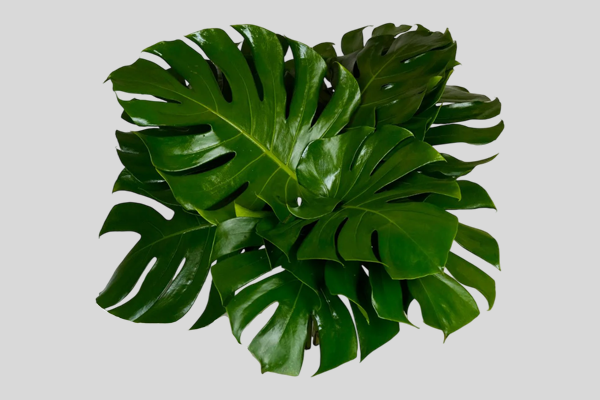
Monstera
Monstera is among the most popular houseplants, famous for its large, fenestrated leaves. Native to the humid tropical forests of Central and South America (Mexico, Costa Rica, Panama, Brazil), it lends a bold, exotic character to interiors and often becomes the focal point of the room. With proper care, monstera grows quickly to impressive sizes. Its broad foliage improves indoor microclimate by humidifying the air and trapping dust and pollutants.
Placement
Provide bright, indirect light. East- or west-facing windows are ideal. Direct sun can scorch leaves; deep shade slows growth and reduces leaf splits and holes. If light is limited, use grow lights. Given its size, floor placement with ample space is best — protect roots from cold floors.
Watering
Water regularly but avoid waterlogging. In spring–summer, water 1–2× per week; in winter, every 10–12 days. Allow the topsoil to dry slightly before the next watering. Use soft, room-temperature water. Thoroughly moisten the root ball, then always drain excess water from the saucer to prevent root rot and brown leaf spots. Monstera appreciates misting and high humidity; add a humidifier or a tray with wet pebbles. For tall plants, a moist moss pole works great — guide aerial roots to it.
Fertilizing
From spring to early autumn, feed every 2 weeks with foliage-plant fertilizer (both root and foliar feeding are useful). You can lightly wet the moss pole with the nutrient solution, too. Stop fertilizing in winter, though keep the pole slightly moist.
Repotting
Repot young plants annually in spring into a pot 3–4 cm wider; mature plants every 2–3 years, refreshing the top layer each year. Use a rich, loose, airy mix with drainage: peat, compost, leaf mold, and a bit of sand (pH 5.5–6.5). Ready mixes for tropical or foliage plants are fine; add coconut chips/fiber or pine bark to loosen.
Temperature
Warm conditions suit monstera best: +18…+27 °C. It tolerates short dips to +15 °C, but below that growth slows and leaves may yellow. Not frost-hardy — avoid cold drafts, abrupt temperature swings, and direct AC airflow.
Pruning
Pruning is infrequent and mainly for size/shape control. In spring, shorten overly long vines and remove old or damaged leaves. Use stakes or a moss pole to train the plant upward for a more decorative form.
Conclusion
Monstera is striking yet fairly undemanding: bright, filtered light; regular but moderate watering; feeding during active growth; repotting every few years; warm, stable temperatures; and light shaping. With this care, it will quickly produce large, signature leaves and become a showpiece in any home or office.
